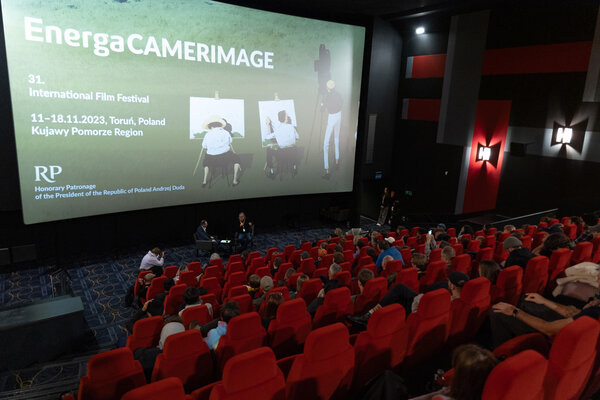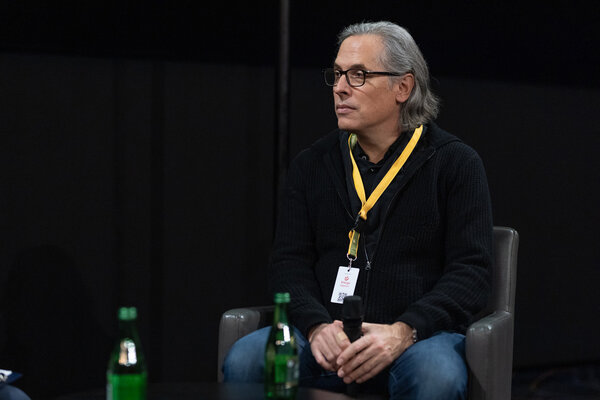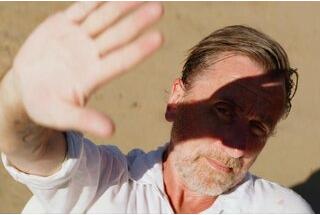Looking back on the meeting with Rodrigo Prieto, AMC, ASC, about Greta Gerwig’s "Barbie"
By Margot Cavret for the AFCThe film tells the story of the encounter between the real world and the imaginary world of Barbieland, a supposedly perfect world, situated halfway between a caricature of Mattel’s famous universe and a tender illustration of a child’s imagination. For Rodrigo Prieto, the challenge in creating the aesthetic of this world was to find the right balance between realism and eccentricity. “Greta Gerwig, the director, defined it as ’authentic artificiality’. That’s exactly what it was, making this imaginary world believable, revealing the magic trick without losing the magic itself."
One of the first approaches explored by Rodrigo Prieto to illustrate this duality was the question of miniaturisation. Since the Barbie toy is about twenty centimetres tall, he was trying to find a way to give the impression that the characters were evolving on a similar scale. To do this, he used an Alexa 65, whose large sensor offers the possibility of a reduced depth of field, a common feature of macro shots and model effects. "I tested a lot of cameras, including film. Greta had never shot digitally, but I encouraged her to choose this medium because I thought Barbie needed its smooth, precise look. I put all the cameras I tested through the same exercise : filming a Barbie, then a woman. I was looking for the camera that would give the most resemblance between the two models. Then I tested all the lenses compatible with the large sensor of the Alexa 65 I’d chosen. I had a preference, but before making my choice I showed all the images to Greta and, unknowingly, like me, she chose Panavision’s System 65. Once again, it was a choice that combined smoothness and precision.”

Although often outdoors, all the scenes taking place in Barbieland were shot in a studio. This decision allowed Rodrigo Prieto to use artificial lighting, while aiming for a form of realism. In this ever sunny world, the cinematographer equipped his set with several ’suns’, 200K SoftSun lamps and a diffused sky. He systematically installed the sun as a backlight as a way to veer away from the strict visual continuity imposed in most films. "In the real world, the sun is millions of kilometres away, but in the studio, the sun was right there !", he explains, pointing to a corner of the room. "Despite everything, I tried to have the most realistic shadows possible, while maintaining perfect lighting, to fit with this perfect world. One of my challenges was that almost everything in the set was pink, creating magenta reflections on the faces. I had to buy a huge quantity of grey material to cover everything that was outside the frame and minimize reflections.”
The shot list was also an element that served well this joyful and precisely calibrated world. Very open to suggestions, the director created the storyboard with the help of the cinematographer. "It became a useful element of the story ; some of the jokes were created simply by the camera’s position. For example, since Barbie does the same thing every morning, I had the idea that the camera should also always follow her in the same way. On the morning when Barbie stops working properly, she gets out of sync with the camera and ends up falling out of frame".
The film also partly involved singing and dancing. For these scenes, the choreography was designed for the camera, and the cinematographer worked hand in hand with the choreographer. "Greta and I watched films every Sunday in preparation, and naturally, we watched a lot of musicals. One of our main references being All that Jazz. During rehearsals, the choreographer would take me by the shoulders and guide me to the spot she had designed her choreography for. We would discuss things and sometimes tweak things to improve the camera experience. For example, for Barbie’s party, she had planned something very complex and difficult to transcribe properly on camera. So we simplified it and had the camera spinning at the centre of the choreography. It gave the characters a very interesting energy and connection. For the lighting in these scenes, our mantra was that anything was possible ; realism was not a priority. Even when it was outdoors, I had fun installing disco balls and very colourful lights.”

In the second part of the film, Barbie goes out into the real world and faces disillusionment and uncertainty. The camera accompanies her, with less meticulous movements. "In a way, the camera was living her experience, searching and discovering things, and learning that there was beauty in imperfection. We thought of doing this part hand-held, but it was too different ; it had to remain the same film nonetheless. For the travel sequence from one world to another, the script was quite vague, and we could have imagined anything, but ultimately we decided to stick to something simple, which retained the naïve and joyful aesthetic of a child’s imagination. The camera was attached to each vehicle, or rather, the camera and the vehicle weren’t moving, and it was the rest of the set that moved. Once again, we wanted to make the theatrical aspect visible, and we did this without any special effects, simply using old tricks reminiscent of Puppet theatre. Yet, it was very technically complicated - we had to calculate the set’s scrolling speed precisely, maintaining the exact axis from one vehicle to another, and so on. That’s everything I love about this profession - using technology and science for the purpose of artistic creation.”
Finally, the film is punctuated by more dreamlike moments, in which Barbie meets her creator, in an other space-time dimension that belongs to neither of their worlds. The first encounter takes place as Barbie, on the run, descends the towering Mattel headquarters building, gradually losing herself and transitioning into this third dimension. "The script simply said ’She opens a door and arrives in a kitchen’. I don’t know why, but it reminded me of going to department stores as a child and seeing miniature sets. I wanted to convey this idea -she’s in the room, and at the same time she’s aware that it’s a space that doesn’t exist, a set. So I suggested that we integrate this set into a larger, completely black space that would betray the artificiality of the place.” During their second encounter, the creator comes to Barbie’s world to give her answers and solutions. "She’s her creator, so she’s like God to her ; we wanted to give the impression that she was coming from paradise, but we didn’t know how to depict that visually. Having her emerge from a completely white space didn’t quite work, and Greta wanted something very colourful.
During that time I saw an exhibition on Turner, and it became obvious to me that the solution lay in that kind of sky. We asked the visual effects team to create a shifting sky based on that idea, and I lit it using SumoLights with changing colour shifts. It was fun to create this surreal abstract space. For Greta, it wasn’t about realism, it was about emotion.”
When asked about diversity in the team for a film so decisively feminist, Rodrigo Prieto admitted having worked with an almost exclusively male team, with the exception of the DIT. "However, making this film was an opportunity for all of us to break down our own stereotypes of what we think masculinity is. It was easier to allow ourselves to sing, to dance, and free ourselves from our preconceived ideas of who we were supposed to be as men."
(Report writed by Margot Cavret, and traducted from French by Chloé Finch, both for the AFC)
 En
En Fr
Fr





